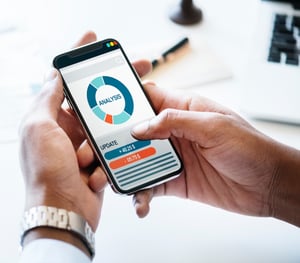Meanwhile, content marketing has become an important part of the digital strategy for many companies. Because in contrast to classic advertising, high-quality content such as blogposts, how-to videos and whitepapers do not interfere, but convince potential customers with helpful information.
Small and medium-sized companies in particular are thus able to generate paying customers from the intended target group with the help of industry-specific topics. However, the countless platforms, personalized feeds and the generally shortened attention span demand a mass of content that is almost impossible to produce.

Content marketing is king: building trust and customer loyalty with good content.
Content marketing (as part of inbound marketing) uses suitable content to convince the desired target group about companies in general and products, services or brands in particular. They are more likely to buy a product or use a service from the person who was best able to help them find their individual solution.
Content recycling: creating and utilizing existing content efficiently

But how can companies continuously produce new content without spending hours, laboriously creating texts, videos & co. The secret of successful content kings: The content often already exists within the company - in the form of blogposts, case studies, white papers, manuals, flyers, newsletters, webinars or presentations. This content only needs to be analyzed and processed further.
With these four steps, companies save time by cleverly reusing content and adapting it for different platforms:
- Analyze content: Identify the content that resonates particularly well with your clientele.
- Define target audience: What challenges are your customers dealing with? What needs do you need to address? Record the preferences of your target clientele as a guide to how best to address them.
- Choose channels: Determine which platforms your content will be distributed on to effectively reach the desired audience.
- Prepare content: Use existing content and adapt it according to context, platform, timeliness, target audience and need.
Do you have any questions or would you like a personal consultation?
Blackbit at the E-Commerce Expo Berlin
Case study: Employer branding & modern recruiting
Hello Hamburg! Blackbit on a great journey
Blackbit wishes you happy holidays

Leave us feedback